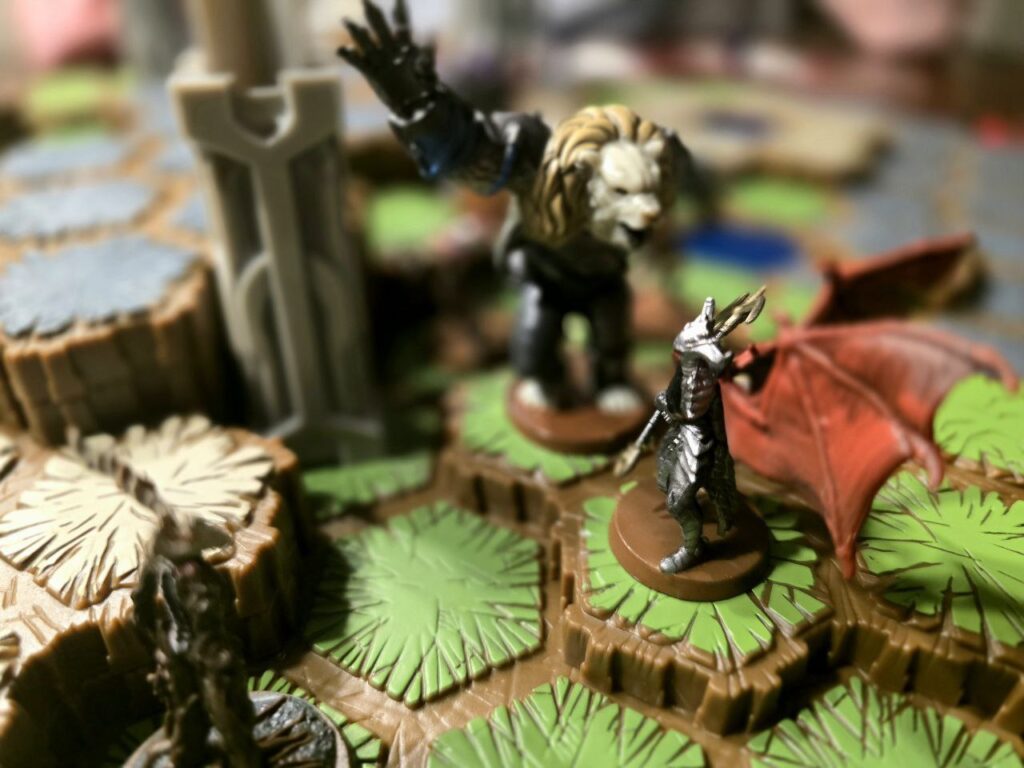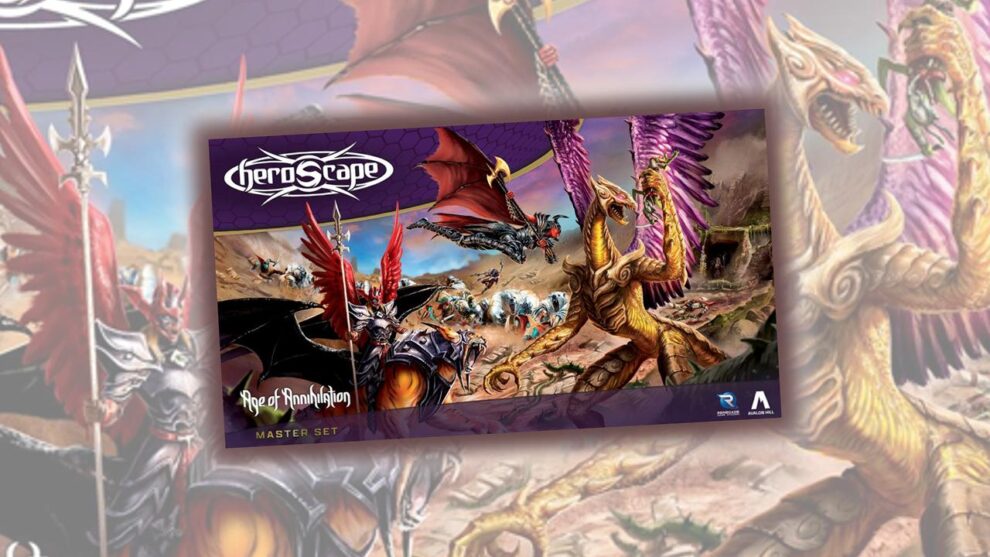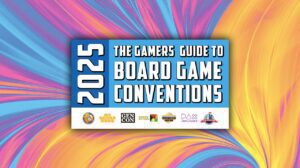Disclosure: Meeple Mountain received a free copy of this product in exchange for an honest, unbiased review. This review is not intended to be an endorsement.
A Brief History of HeroScape
Heroscape was something I admired from afar during my youth. The original Hasbro/Milton Bradley-branded Heroscape ran from 2004 to 2008, with big, mismatched characters that I remember seeing on the shelves of KB Toys and Toys “R” Us. The main innovation was interlocking plastic hex tiles that allowed simple terrain assembly. The world of HeroScape included characters from diverse realms—robots, dragons, orcs, samurai, Marvel heroes, and even WWII units. Heroscape was pitched as an “easy to learn, hard to master” skirmish game, featuring simplified rules for younger audiences but advanced powers for more experienced players. I was in high school then and more into video games, and it was a decade before my exposure to tabletop gaming. Still, I thought the minis looked cool on a shelf.
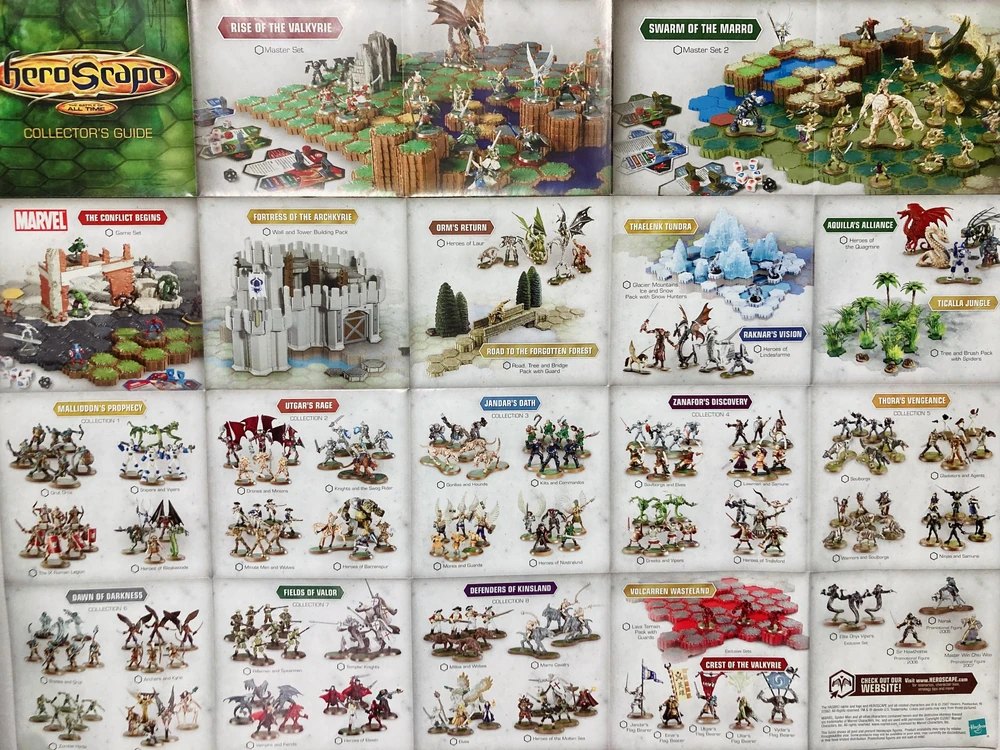
By the end of the 2000s, Heroscape had moved to Wizards of the Coast (WOTC) after Hasbro’s restructuring. WOTC focused on Dungeons & Dragons-themed sets, offering cheaper minis usable in the RPG. Unfortunately, this wasn’t enough to sustain Heroscape, and the system was discontinued in 2010 due to declining sales and high production costs.
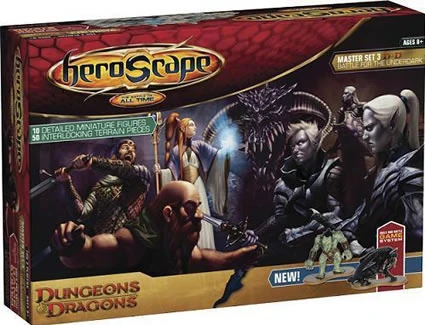
Throughout the following decade, Heroscape survived primarily through its online community. Fan-created scenarios, factions, and digital implementations like Tabletop Simulator kept the skirmish game relevant, at least within its devoted community.
This buzz led Hasbro to attempt a revival in 2022 through crowdfunding with “Age of Annihilation.” The revival included redesigned minis, updated rules retaining core mechanics, and added lore. However, the campaign failed, unable to reach the 8,000 backers required for funding.
There is a happy ending, however. In October 2023, Renegade Game Studios announced a partnership with Hasbro to revive HeroScape, aiming for a retail-first approach with accessible pricing and widespread availability. The goal was to resonate with board gamers, wargamers, and nostalgic collectors. Today, Heroscape continues with a variety of factions and an easy-to-learn system, offering pre-painted minis and improved quality control. The modular hex terrain is also presented as system-agnostic, encouraging use beyond Heroscape itself. Among titles like Memoir ’44, Malediction, Omicron Protocol, and War of the Ring, Heroscape seeks to reestablish itself as a household name in skirmish gaming.
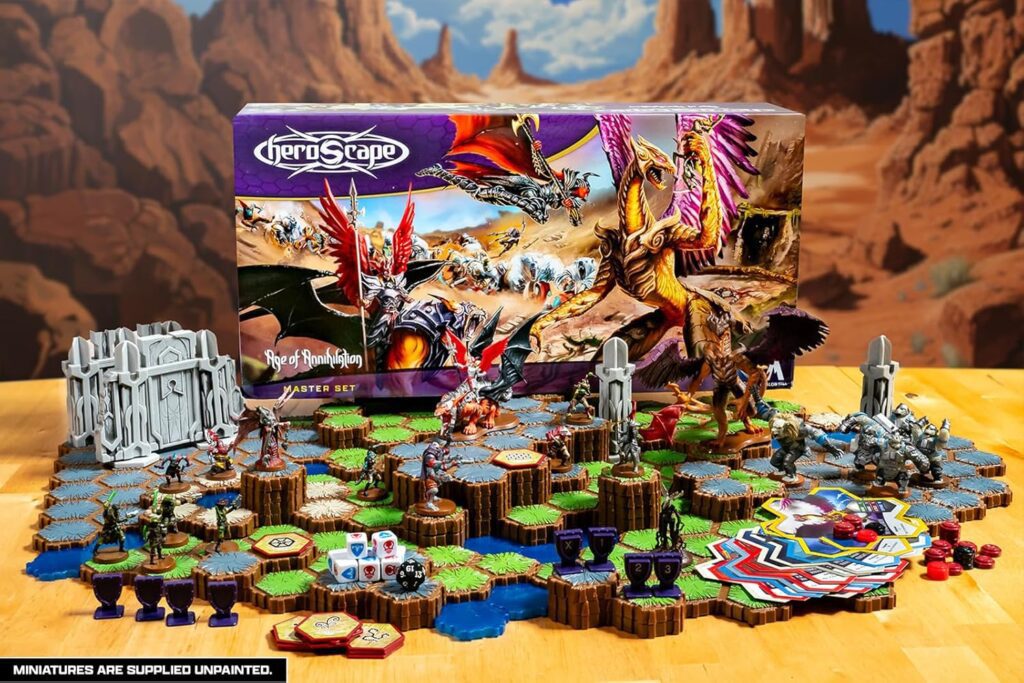
Play How You Want
Heroscape: Master Set – Age of Annihilation is the centerpiece of the game’s reboot, featuring numerous terrain tiles and twenty premium-sculpted minis, ranging from dwarves and pirates to dragons and even a six-armed gunslinger. The set includes multiple play modes, primarily 2-player skirmishes, scenario play, and co-op play when additional sets are incorporated. Two sets of rules offer adjustable complexity. Basic rules focus solely on move, line-of-sight, and attack mechanics—great for younger players or quick battles. Advanced rules introduce special attacks and powers, adding complexity and strategic depth.
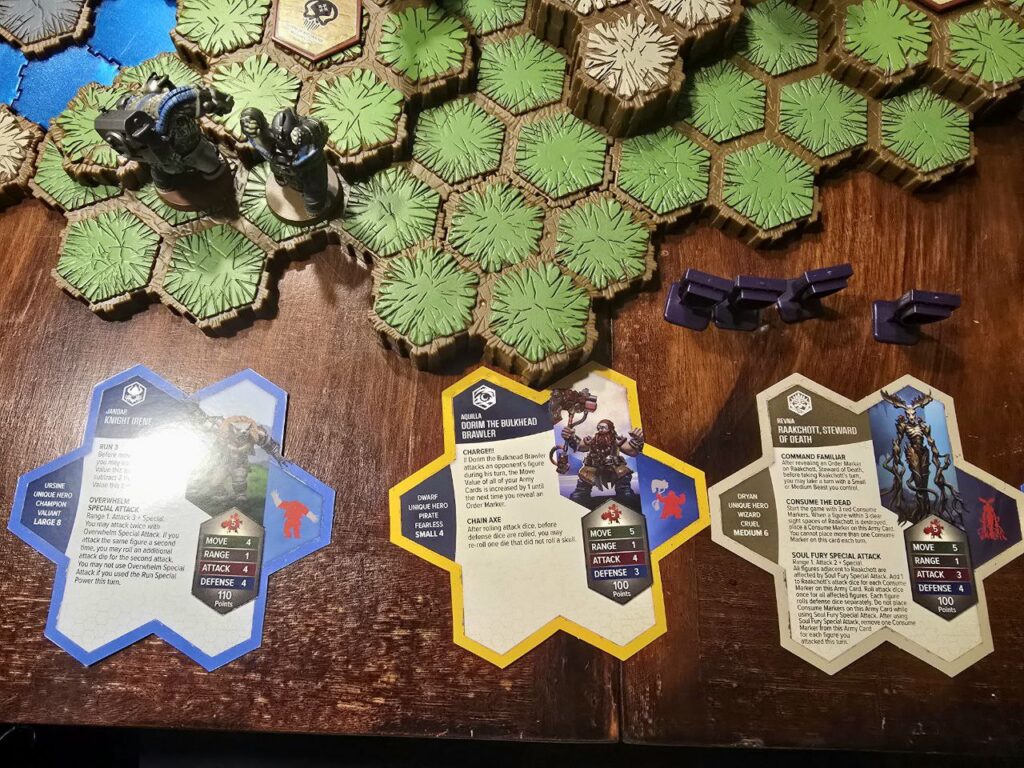
Scenarios provide thematic, lore-rich setups with predetermined armies and objectives, such as controlling specific terrain by a certain round. Scenarios are excellent for learning mechanics or adding structure, as battlefield layouts and starting positions are preset.
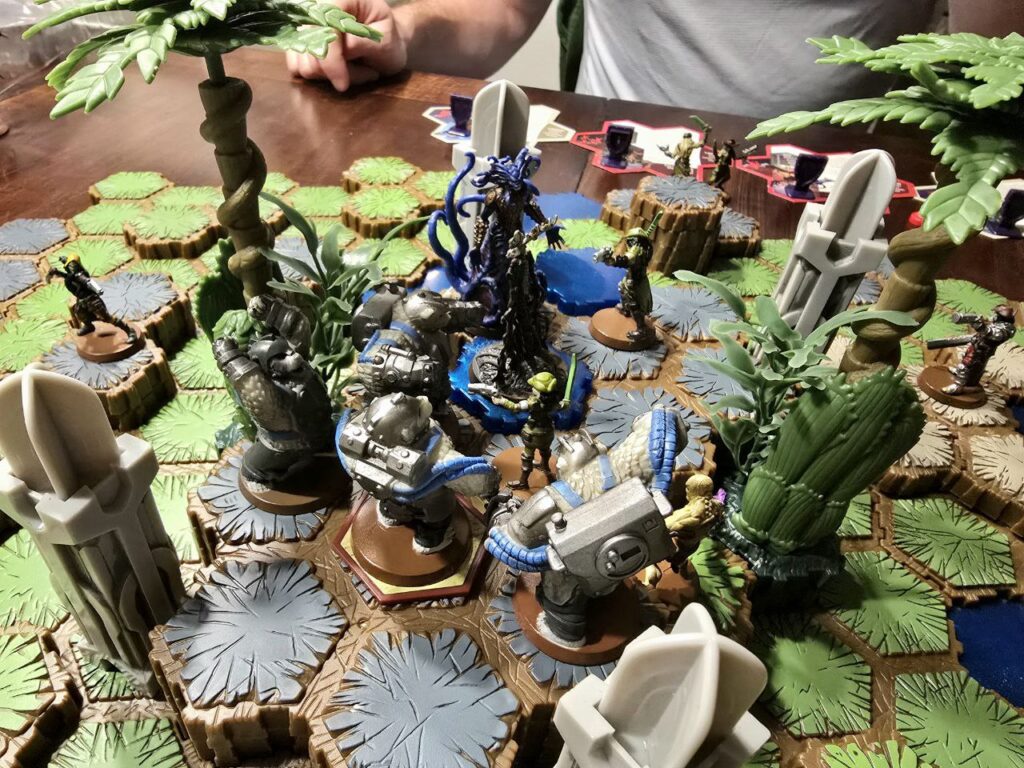
Outside of scenarios, traditional wargaming rules apply. Players draft characters based on a predetermined point limit, with characters varying in point value, some including multiple figures (squads). This freeform style allows players to customize battlefields and win conditions. Each round, players determine character priority and resolve combat via dice rolls—skulls signify hits, shields defend, and eliminated figures are removed from play. Typically, elimination is the fastest route to victory.
Live and Die By Dice
While I don’t claim to be a wargamer or skirmish enthusiast, I genuinely enjoyed this system. Scenarios and gameplay lasted from thirty minutes to an hour due to the swift combat resolution. Dice rolls, enhanced by character modifiers, made battles quick and manageable, though dice randomness (RNG) occasionally frustrated me. Tactically positioning a character only to roll blanks or lose a key figure early because of poor rolls was annoying, but core to the game’s charm.
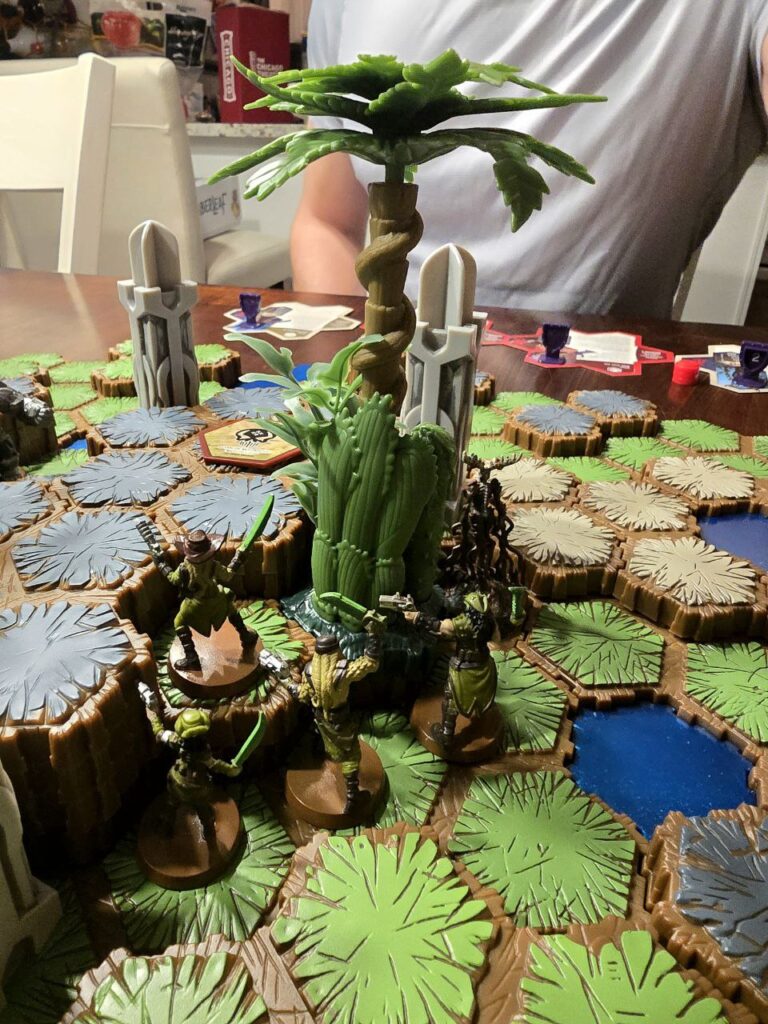
Drafting armies is also a key fun factor in the system. For those unfamiliar with wargaming point systems, armies are selected based on point values. For example, players agree on a 400-point army, and each figure or squad has a specific point value. Players take turns drafting, one at a time, until they’ve reached the agreed-upon point limit. The decision space here is tough! Do you draft similar clans for synergy or diversify your picks to give yourself more options? Players can even dump most of their points into one of the big (literally!) bad figures included in the box—Xenithrax the Vineweaver or Raelin the Kyrie Warrior. Xenithrax even has special spatial rules where other figures can’t stand directly behind her since her tail literally occupies that space.
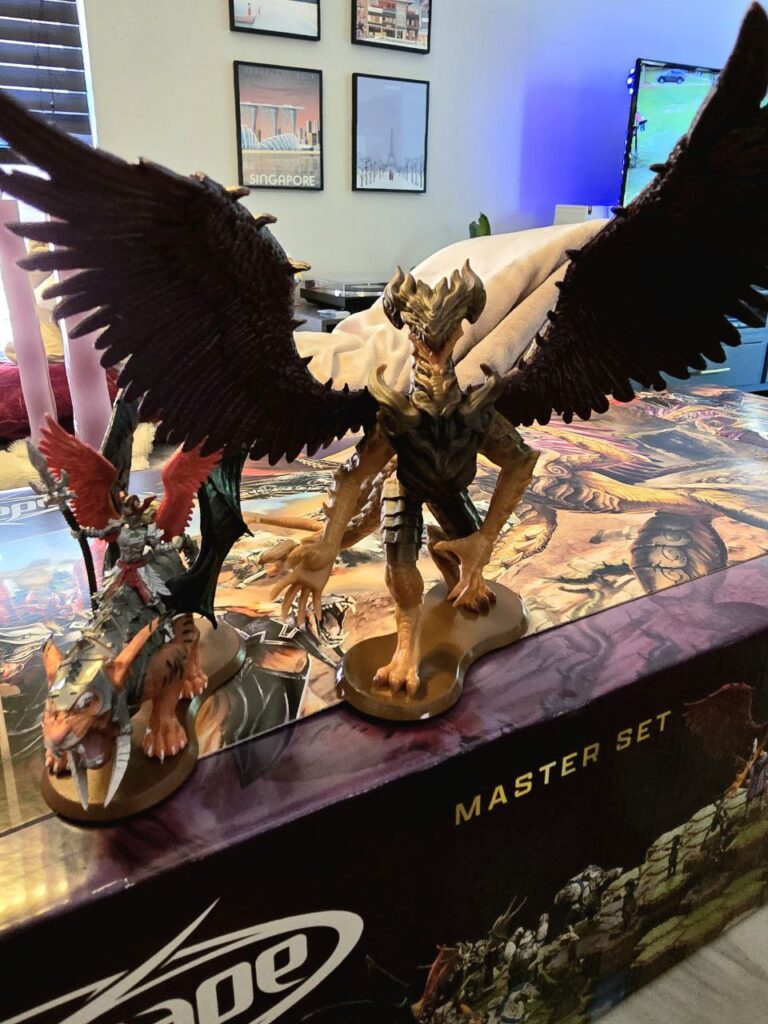
Heroscape feels like a nostalgic toy, complete with flashy marketing urging players to “collect them all.” Gameplay evokes childhood memories of smashing action figures in imaginary battles—simple, no-frills fun.
The variety of troops is impressive, and if I had the space, funds, and a dedicated group, I’d eagerly buy all expansion content. The modular elements make it an approachable alternative to complex games like Warhammer, with easy-to-track hex combat eliminating the need for rulers or pencils, although line-of-sight checks around obstacles can occasionally be tricky. Terrain stacking introduces height advantages, consuming movement points but granting attack bonuses. Fans of Minecraft might particularly enjoy building intricate battlefields.
Pair With Saturday Morning Cartoons
Overall, Heroscape appeals strongly to my inner child, making me wish I had children of my own to share it with. It’s a solid system with vast expansion potential—collecting everything could easily break the bank. Battles are brief, often taking less time than assembling premade maps. With Renegade Game Studios at the helm, Heroscape seems poised for a successful re-entry into the mainstream gaming scene. I hope it’s strong enough to make an impact in an already crowded market. Suppose Renegade continues to listen to community feedback and support the game with consistent, high-quality expansions. In that case, Heroscape might not only attract nostalgic players but also cultivate a new generation of fans. Time will tell if this beloved franchise can recapture its former glory, but the early signs suggest there’s plenty of optimism and excitement surrounding its future.
